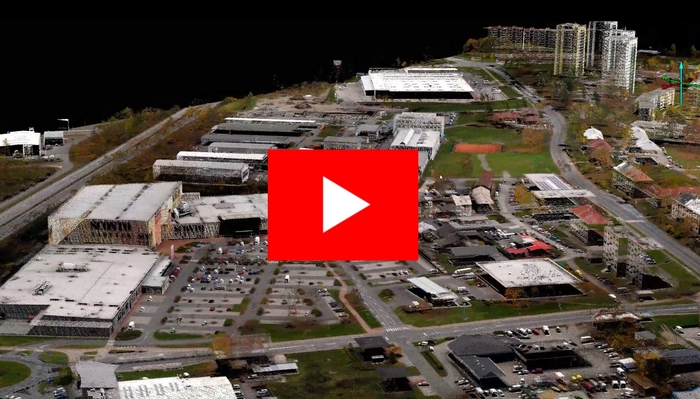Remote sensing

Creation of Digital Technical Maps (DTM), green or public lighting passport, development of transport and spatial planning, digitization and creation of BIM for civil engineering and as well as monitoring landscape changes, flood risk assessment or environmental protection – in all these areas, remote sensing is a necessity.
Remote sensing provides precise and easily accessible information about a specific location. Using satellites, aircraft or drones, we gather all relevant data to create a detailed 3D digital twin or a high-resolution orthophoto map, which is an extremely accurate 3D model of the surface of the earth. For Remote sensing, we utilize cameras for optical imaging, hyperspectral sensors as well as ground and aerial scanners for LiDAR scanning.
Outputs from Remote sensing:
How is a 3D digital twin created and what is LiDAR?
Light Detection And Ranging - LiDAR is a way to use a laser to render a scanned object or the surface of the Earth. If we want a 3D model, we have to:
Collect data with a lidar sensor and create a point cloud: LiDAR technology sends laser beams to the Earth's surface and measures the time it takes for the beams to bounce back to the sensor. This will determine the distance between the sensor and various points on the terrain surface. From the obtained data we create a point cloud, which contains a large number of 3D points representing objects and various points on the terrain surface.
Data filtering and correction: Point clouds often contain noise and inaccuracies. Therefore we need to filter and correct the data to ensure its accuracy and quality. We remove noise, calibrate the sensor and correct for atmospheric effects.
Creation of a digital terrain model (DTM) and a digital surface model (DSM): We create a digital terrain model from the point cloud. This 3D model includes elevation information of the Earth's surface. The second variant is a digital model of the surface, which also includes height information about objects such as trees or buildings.
Creating textures and color image: For a more friendly display and visual realism, we can add colors and textures to the 3D model. We can use information obtained from optical images for this purpose.
Data integration: Finally, we integrate all the acquired data into one 3D digital twin, that gives you a detailed and realistically rendered model of the terrain or various objects available in digital form.
